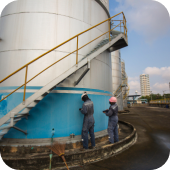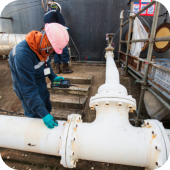

Gamma Test NDT
Gamma Test NDT's inspection activities are carried out by their non-destructive inspection personnel certified according to TS EN ISO 9712.
Overview
Gamma Test NDT's inspection activities are carried out by their non-destructive inspection personnel certified according to TS EN ISO 9712. Within the scope of our activities, among the projects carried out by their organization so far are factories producing pressure vessels, natural gas main pipelines, natural gas installations of industrial facilities, welding controls of ships in shipyards, stadiums, shopping centers, HES Projects, water pipelines within the body of İSKİ, DSİ, Ereğli, and İskenderun Iron and Steel Factories in the iron and steel industry. There are hundreds of industrial establishments. Gamma Test NDT experiences the satisfaction of performing the controls successfully.
Products
Services
Ads












